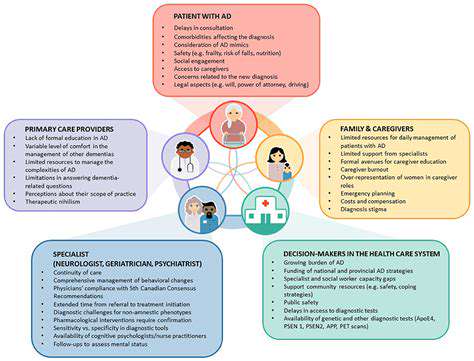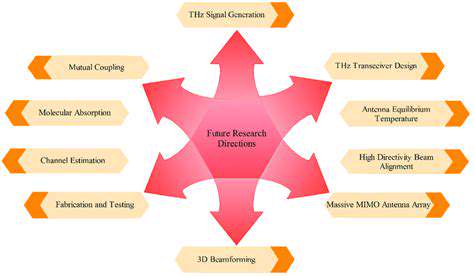The Complex Relationship Between Eye Strain and Migraine Auras

Genetic Factors in Visual Sensitivity
Recent studies in neuro-ophthalmology have revealed that certain genetic markers may make individuals more prone to both visual disturbances and migraine episodes. These genetic variations appear to affect how the retina and visual cortex process light stimuli, potentially creating a biological basis for the eye strain-migraine connection. While research continues, these findings suggest that some people might be biologically predisposed to this dual condition.
Interestingly, the same genetic clusters associated with light sensitivity in migraines also show correlation with certain retinal conditions. This overlap provides compelling evidence for shared biological pathways between ocular and neurological symptoms.
Environmental Influences on Visual Health
Modern digital environments present unique challenges for visual health. The combination of blue light exposure from screens, poor lighting conditions, and extended focus periods creates what researchers call digital eye strain syndrome. This syndrome appears to trigger neurological pathways that can initiate or worsen migraine episodes in susceptible individuals.
Beyond digital devices, other environmental factors like flickering lights, glare, and even certain weather patterns have been documented as potential triggers. These observations suggest that environmental modifications could play a significant role in prevention strategies.
Inflammatory Pathways in Visual Processing
The eyes and brain share complex inflammatory response systems. When ocular inflammation occurs, it can stimulate trigeminal nerve pathways that are also involved in migraine pathophysiology. This creates a potential feedback loop where eye strain triggers neurological inflammation, which in turn may worsen visual symptoms.
Emerging research indicates that targeted anti-inflammatory approaches might simultaneously address both ocular and neurological components of this condition. This dual-action potential makes inflammation a particularly promising area for therapeutic development.
Oxidative Stress in Visual-Neurological Pathways
The high metabolic demands of visual processing make both retinal and brain tissues particularly vulnerable to oxidative damage. When oxidative stress accumulates, it can impair cellular function in ways that manifest as both visual disturbances and neurological symptoms. This shared vulnerability may explain why antioxidant therapies sometimes show benefits for both eye strain and migraine symptoms.
Clinical observations suggest that periods of intense visual work often precede migraine episodes in susceptible individuals, possibly due to the increased oxidative load from prolonged neural activity.
Nutritional Support for Visual-Neurological Health
Certain nutrients appear to play dual roles in supporting both ocular and neurological function. Magnesium, riboflavin, and omega-3 fatty acids have demonstrated benefits for both eye strain and migraine prevention in clinical studies. The mechanisms likely involve their roles in cellular energy production, nerve function, and inflammatory regulation.
A growing body of evidence suggests that targeted nutritional interventions might represent a practical approach to managing this complex condition. This is particularly relevant given the generally favorable safety profile of nutritional therapies.
Neurological Integration of Visual Signals
The visual system represents one of the most neurologically demanding functions, requiring precise coordination between ocular structures and multiple brain regions. When this integration becomes disrupted - whether through strain, fatigue, or neurological sensitivity - the consequences can manifest as both visual and neurological symptoms.
Advanced neuroimaging techniques are beginning to reveal how these integration points might malfunction during migraine episodes with visual aura. These insights could lead to more targeted treatments that address the root causes rather than just symptoms.

Emerging Research Priorities

Investigating AI's Role in Medical Diagnostics
The application of artificial intelligence in medical diagnostics presents both opportunities and challenges. Machine learning algorithms show particular promise in analyzing complex patterns in neuro-ophthalmological conditions where multiple symptom domains overlap. Future studies should focus on developing AI tools that can integrate visual, neurological, and genetic data to provide more precise diagnostic insights.
However, these developments must be accompanied by rigorous validation protocols and ethical guidelines to ensure patient safety and data privacy.
Developing Comprehensive Safety Standards
As diagnostic technologies become more sophisticated, establishing robust safety frameworks becomes increasingly important. Research should focus on creating standardized protocols for technology-assisted diagnosis, particularly in complex conditions that span multiple medical specialties.
Advancing Transparent Diagnostic Algorithms
The medical community requires diagnostic tools that provide not just answers, but understandable reasoning. Developing explainable AI systems for medical diagnosis could significantly improve clinician acceptance and patient understanding of complex conditions. This transparency is especially crucial when dealing with conditions that have both ocular and neurological components.
Assessing the Environmental Impact of Medical Technologies
The healthcare sector must consider the ecological footprint of its technological advancements. Future research should evaluate the sustainability of various diagnostic approaches, from energy-intensive imaging technologies to disposable screening devices.
Improving Accessibility of Advanced Diagnostics
Technological advancements should not exacerbate healthcare disparities. Research priorities should include developing cost-effective screening tools and telemedicine approaches that can bring specialized diagnostics to underserved populations.
Examining the Social Impact of Diagnostic Technologies
New diagnostic capabilities often reshape patient experiences and healthcare delivery models. Studies should investigate how these changes affect doctor-patient relationships, healthcare accessibility, and public health outcomes.
Establishing Ethical Guidelines for Diagnostic AI
The rapid development of diagnostic technologies necessitates parallel progress in ethical frameworks. Creating clear guidelines for algorithm development, data usage, and clinical implementation will be crucial for maintaining patient trust and ensuring equitable access to these advancements. These frameworks should address both technical and humanistic aspects of medical diagnosis.